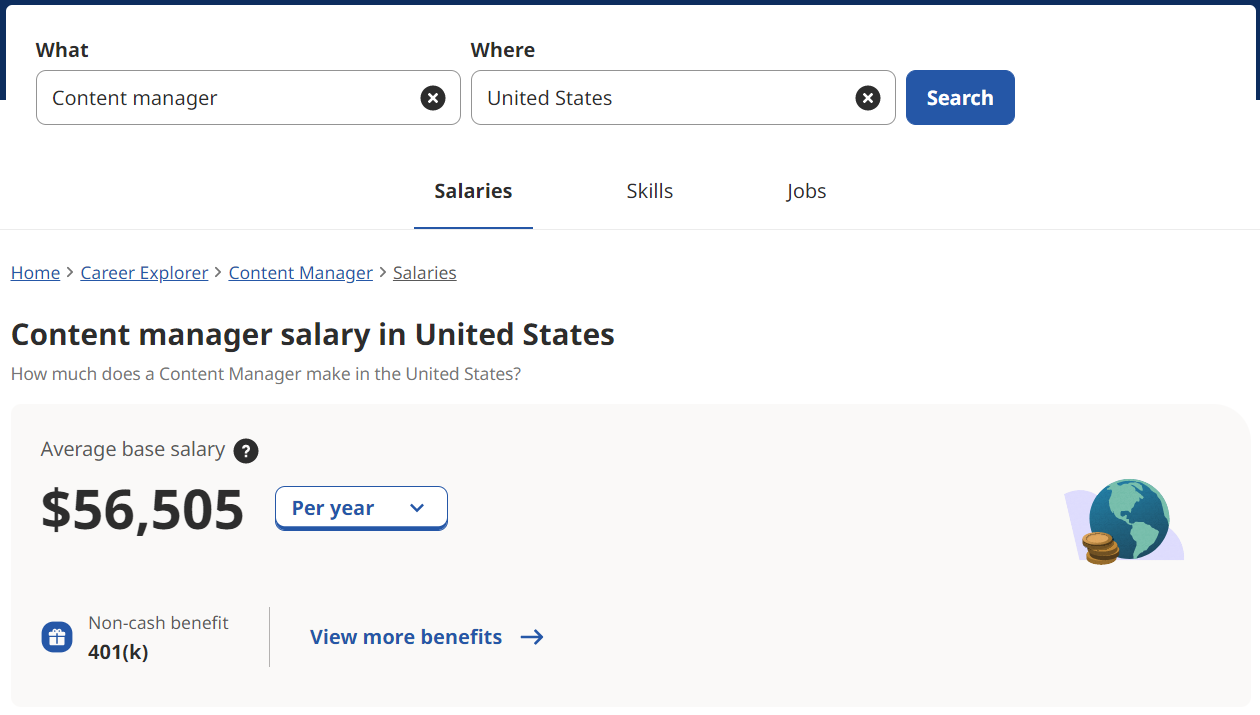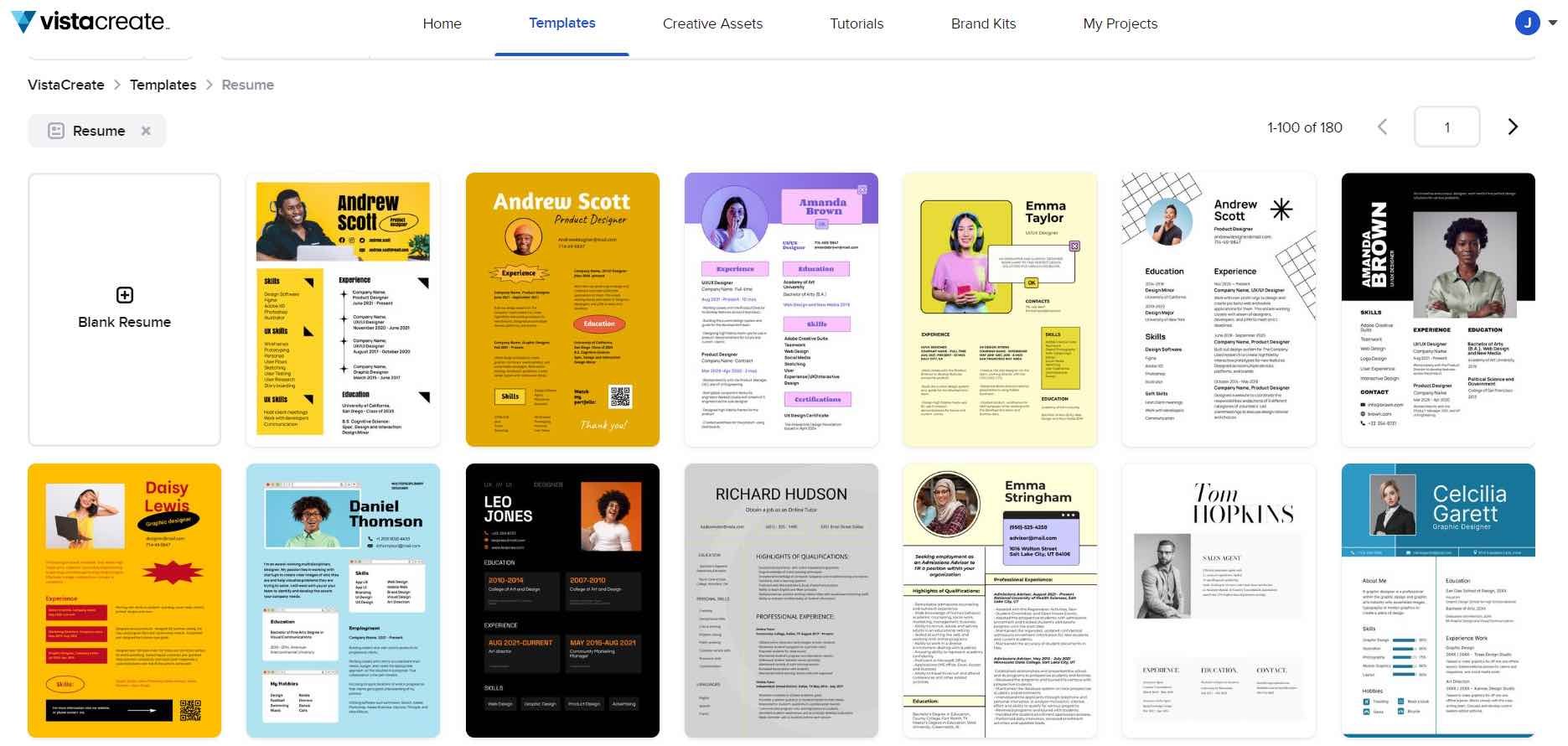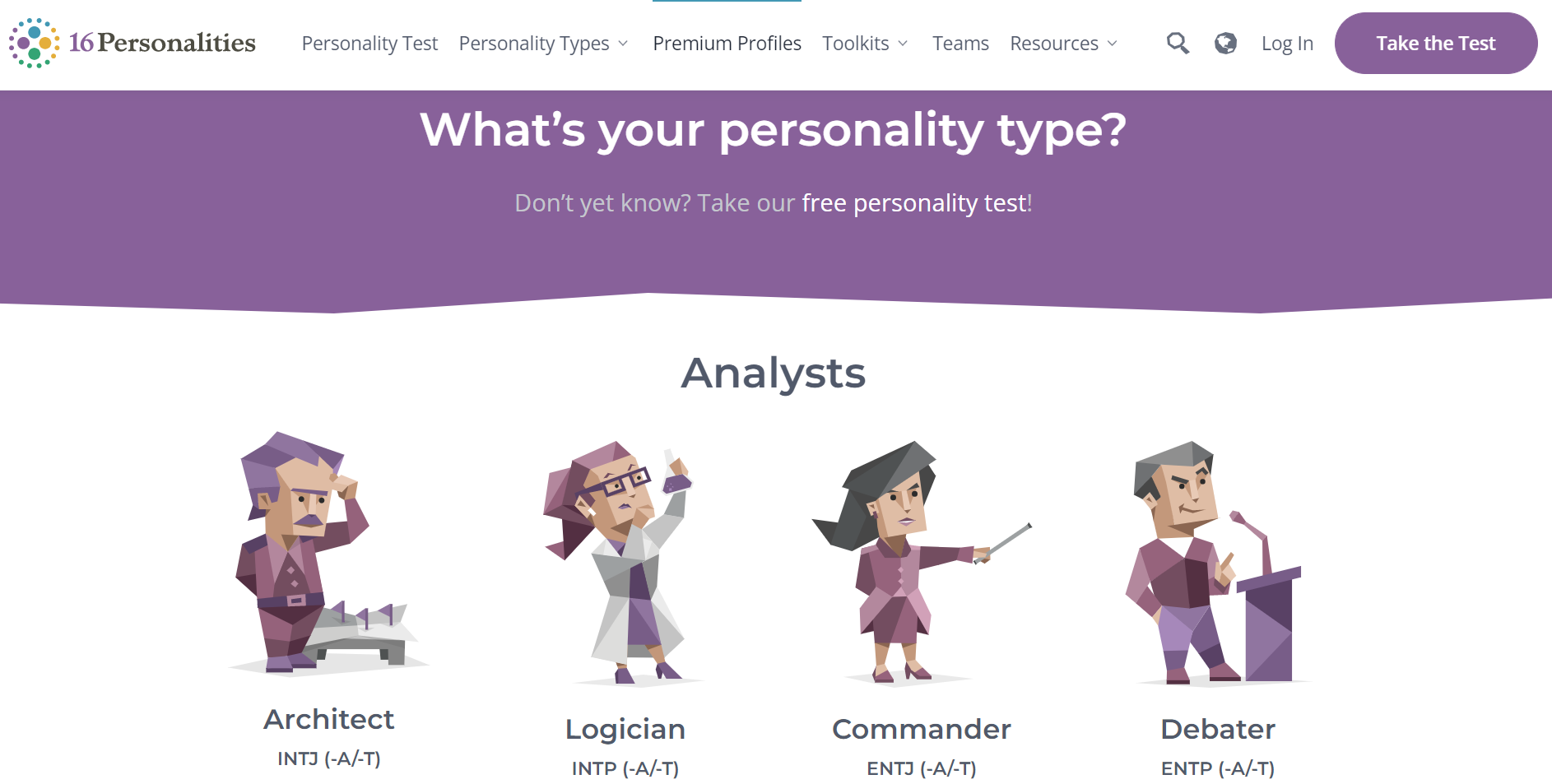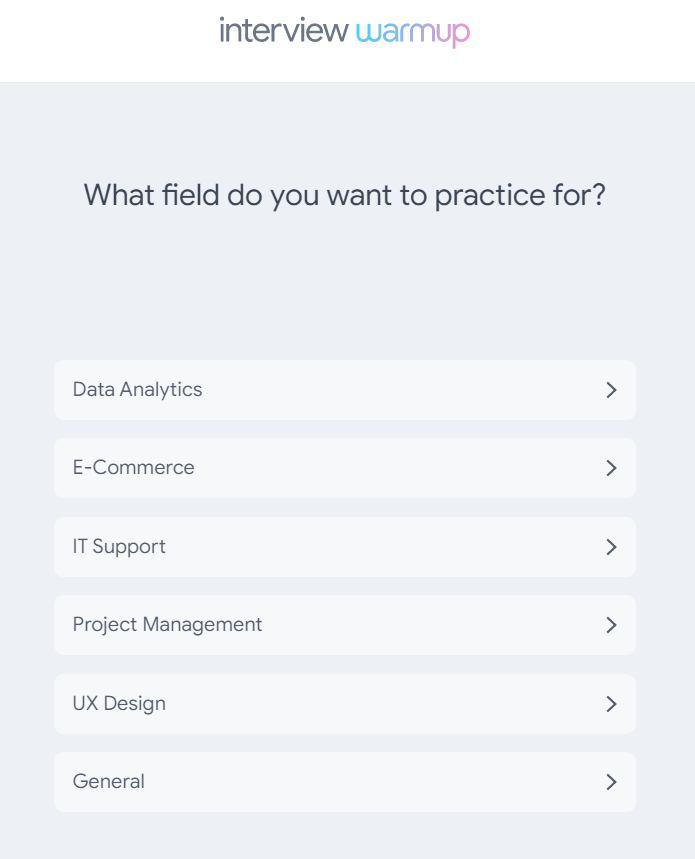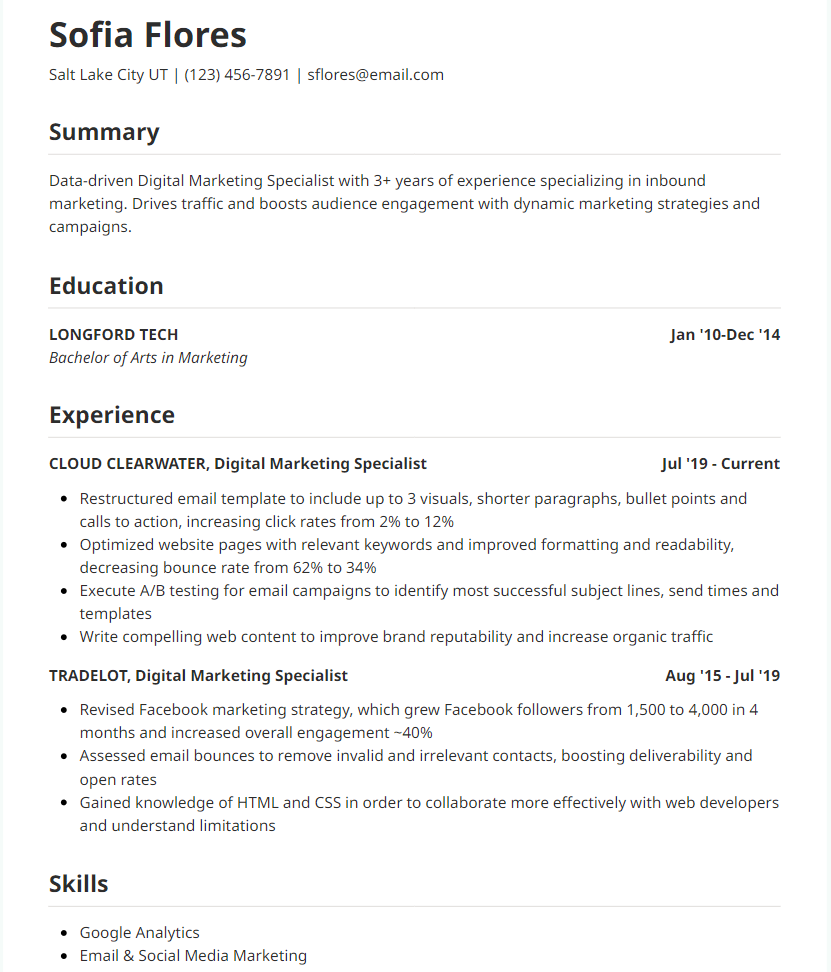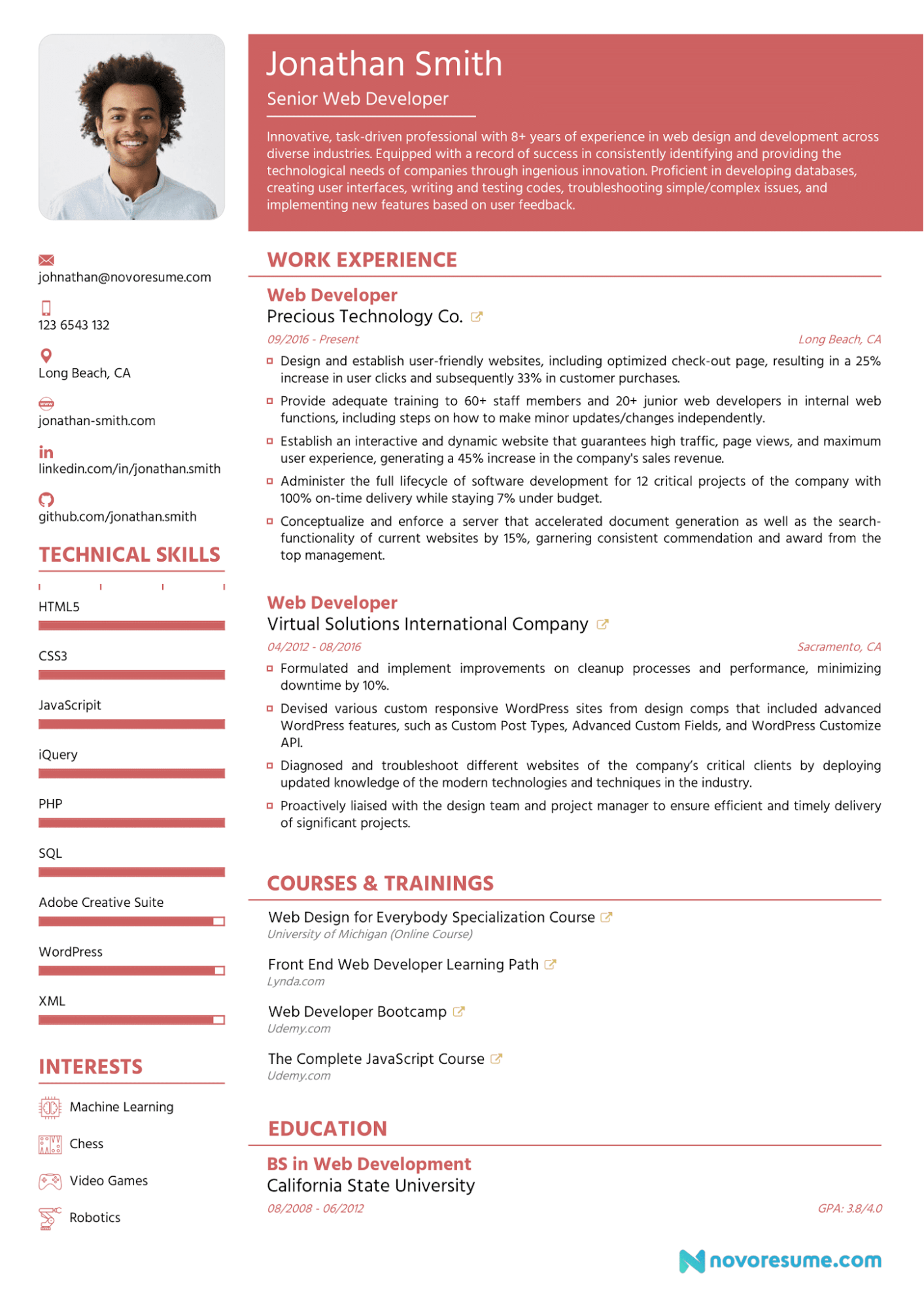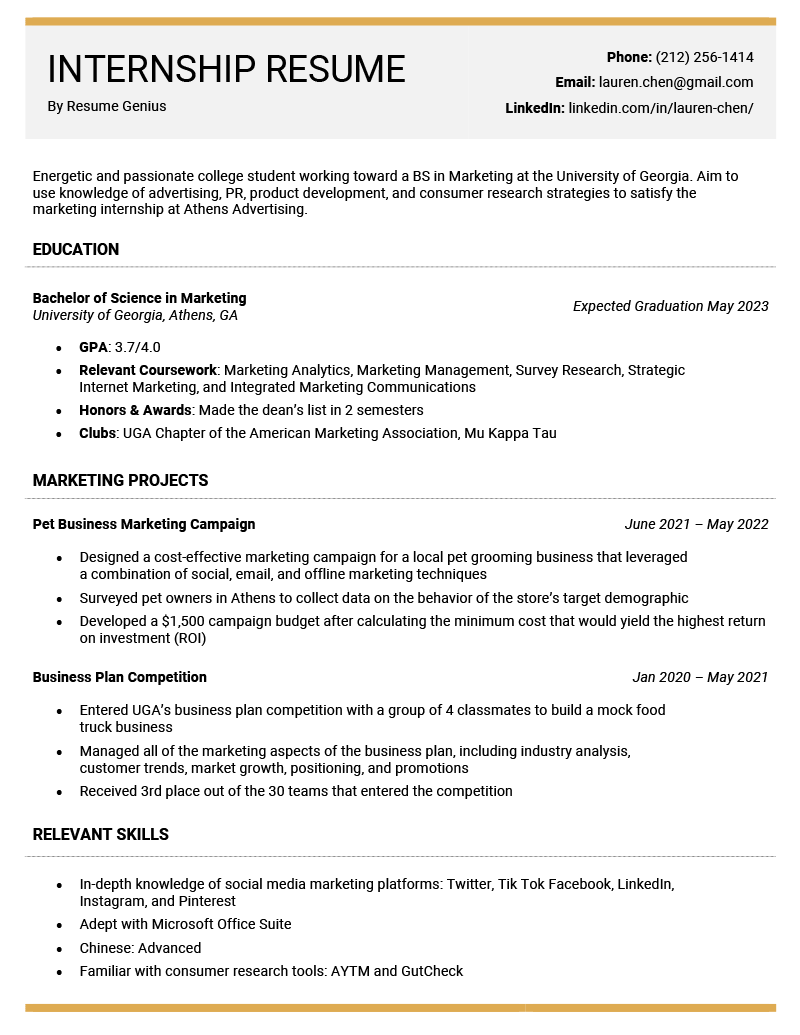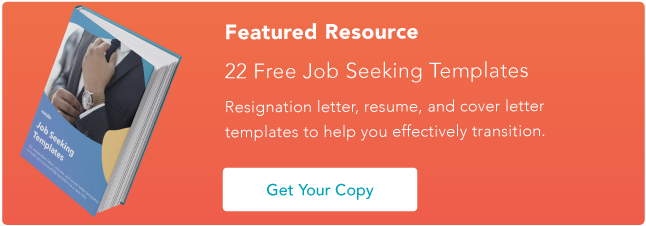The Job Search Process: 10 Tips on How to Land Your Dream Job (+3 Resume Examples)
The job search process can feel daunting. Every step of the process — from finding relevant opportunities to interviewing — is a major time investment. However, an organized to-do list can keep you on track.
In this post, you’ll learn the essential steps for an organized job search and tips to help you land your dream gig. Let’s get started.
Table of Contents
- 10 Important Steps in the Job Search Process
- 10 Job Search Tips
- 3 Resume Examples Tailored to Different Niches
- Starting Your Job Search
10 Essential Steps for Your Job Search Process
Without a roadmap, finding a new job can be overwhelming. This to-do list guides you through the essential steps of any job hunt.
1. Start with your mindset.
Job hunting begins with your mindset. The right attitude can help you approach the process with resilience.
Be prepared to wait for the right opportunity. Don’t be upset if you haven’t secured a new job within a couple of weeks. The average duration of unemployment is five and a half months, according to 2022 data from the U.S. Bureau of Labor Statistics. In fact, just moving from an interview to an offer takes 23.8 days on average.
However, timeframes heavily depend on the industry, your experience, and the urgency to fill a role. For example, a government role will have a longer time to hire than many corporations.
Another reminder: don’t take “no” personally. Any job seeker inevitably faces rejection — direct and indirect. Sometimes, you don’t hear back on your application. Other times, you receive a direct refusal with a concise explanation of why you didn’t make the cut.
Don’t let small losses set you back. Set yourself up for success, and keep trying.
2. Set your job search parameters.
Don’t just apply to every job you see. List what positions you’re interested in and start searching from there.
Think of what skills you’ve already acquired. Do you want to pursue the same role or explore a new career path or industry? Ask yourself what you’re passionate about and what you would like to do long-term. Reflect on your thoughts by writing them down.
If you’re looking to stay in your industry, consider your experience. Focus on positions that align with your expertise. Knowing what you’re good at will help you tailor your CV and secure a new job faster.
Pro tip: Create an ideal job description that details your desired responsibilities, location, and benefits. This outline can help keep you focused.
3. Understand your field.
Industry research can help you tackle your job search with updated knowledge. You should find out the education requirements, level of experience, and responsibilities associated with your desired roles.
You’ll also discover which qualities and skills employers are looking for in your field. That can help you showcase your competitive edge in resumes and cover letters.
Pro tip: Open any job board — Indeed, Glassdoor, Tech Ladies — enter the job name, and analyze the job descriptions of five open vacancies. Then you can decide whether the future job resonates with your interests.
4. Know your worth.
How much money would you like to earn within a year? It’s important to know if your expectations correlate with the job market.
Analyze the market averages using Indeed or Glassdoor’s salary calculator. You can then gauge the average yearly salary based on your role and location.
You can also reach out to people in similar positions and ask what salary range you should expect for a certain position. Tap your network, or find relevant people on LinkedIn.
Lastly, turn to Google. Many companies conduct compensation research so you can get a more accurate salary range for your industry.
Remember: Compensation isn’t just salary. Decide what benefits and bonuses your ideal package includes. For instance, you might be looking for comprehensive healthcare coverage or a 401K package. Understand which benefits are on your need-to-have list.
5. Review your social media accounts.
You’ll want to impress recruiters with your first-class LinkedIn profile. Here’s what recruiters look at when scrolling through your page:
- How you represent yourself — your headline and the about section.
- An appealing photo and a cover image also play a role. Use a neutral cover image or write a short message.
- Detailed work experience. Highlight achievements in your previous positions: show numbers and your impact.
- Certificates.
- Skill endorsement and feedback. Ask friends and colleagues to endorse your skills.
- Your activity. Keep your profile active — post, like, and comment on relevant stories.
While recruiters spend most of their time on LinkedIn, you’ll want to clean up your social media presence on other platforms. Make sure your posts are office-friendly.
Pro tip: Google your name in an incognito web browser to see how your social media profiles may appear to recruiters that search your name.
6. Polish your resume and application materials.
Work smarter, not harder. Instead of pure volume, focus on building custom applications for the roles you’re most interested in. A well-tailored resume and cover letter will have better results than a generic approach.
Start with your resume. You can use a resume builder to create a professional. Hubspot offers free templates to help you get started. For creative roles, consider designing your resume using Canva or VistaCreate’s templates.
When writing a cover letter, write directly to the recruiter or hiring manager. If you can find the person’s name, be sure to address them specifically.
Pro tip: Create one document with all of your professional experience and accomplishments. Then, paste relevant bullet points into a resume template. That allows you to take a customized approach for every company, without re-writing your job experience for each application.
7. Upskill while waiting.
Are you missing one or two required skills? While applying for jobs, enroll in free online courses to help fill these gaps. You can then show recruiters that you’re eager to learn new skills.
HubSpot Academy offers a wide range of digital marketing courses for entry-level and professionals for free.
Udemy and Coursera are also reputable online learning platforms that offer paid and free courses. Sessions are made by industry leaders from Meta, IBM, Google, and other top companies. You can also find courses created by universities like Yale, Cambridge, and Oxford.
8. Prepare for the interview process.
Instead of cramming the night before, start preparing for interviews while you apply for jobs. That way, you’ll always be prepared to provide evidence of your skills.
Start with these common interview questions:
- Why did you quit your last job?
- What makes you a great candidate?
- Why are you interested in this opportunity?
- What did you like about the company?
- What are your hobbies?
- What motivates you?
- What last book did you read/course you took?
- What did you dislike about your previous boss/company?
LinkedIn’s course on “Expert Tips for Answering Common Interview Questions” is another great way to prepare. The course takes job seekers through commonly-asked interview questions and offers tips on how to answer correctly. Plus, you’ll learn how to negotiate your salary.
You can also role-play interviews with friends or sign up for an interview prep service to help polish your skills.
9. Research potential employers.
Can you see yourself working at a certain company? Diving into organizations’ histories and cultures can help you assess your fit. Start by investigating companies’ LinkedIn profiles. Then read reviews from employees on Glassdoor and Indeed.
If you’re applying for a startup, research founders and see what their past experiences look like. A first-time founder isn’t necessarily a red flag. Look for those who have experience in different roles and managerial positions. They’re more likely to understand how to drive a company’s growth.
Pro tip: Networking can also be a powerful tool. Reach out to people from the company, preferably in the department you’re applying to, and ask for their insights. Make a list of questions beforehand to keep your conversation focused.
This can all help you understand if a company aligns with your needs and what hiccups you might expect.
10. Prepare a “thank you” email.
After an interview, you can also stand out by sending a customized thank you email to your recruiter.
The best approach is to share your true emotions and experiences of the interview. Specify what part of the interview got you excited. Also, highlight your unique value.
You should also express gratitude to anyone you networked with during the interview process. That person may endorse you to the recruiter.
10 Job Search Tips
Now that you’ve structured your job search process, here are 10 more tips to help you get hired.
1. Analyze your personality type to understand yourself better.
Complete the 16Personalities MBTI test or the DISC test as a tool for self-reflection. These tests can help unveil your core strengths and weaknesses. Results often come with suggestions for career paths suited to your personality type.
2. Leverage the STAR method when answering recruiters’ questions.
Ace the interview with the STAR method (Situation, Task, Action, Results). Recruiters want you to back up your intangible skills, like leadership, with examples. Getting familiar with the STAR method in advance will give you leverage during an interview.
3. Include external links in your resume to bolster your skills.
You should always include your LinkedIn on your resume. Depending on the role, other supplemental links may be appropriate.
For example, a graphic designer should include a link to their Behance profile. For content writers, create a spreadsheet, and list all your published articles on it. Use GitHub to showcase your tech skills.
4. Master your English speaking skills.
Worried about your language skills? Take quick courses to master the interview process for an English-as-a-second-language job seeker.
Want to nail a tech interview with flawless English? Play with Interview Warmup by Google to practice key questions and get feedback from the AI assistant. Choose your field and start practicing.
5. Network with industry peers.
Join online communities relevant to your job. Reach out to industry professionals for advice. This can be especially helpful if you’re trying to land your first job in a field.
6. Be bold and dedicated.
On LinkedIn, you can find fantastic examples of how folks with close to zero experience landed their first jobs in sales, marketing, or tech. The key is to focus on transferable skillsets. Be bold about your abilities, while demonstrating a dedication to learning new skills.
We love the story of how a bus driver with no college degree nailed an SDR position proving himself out of 350+ applicants.
7. Know where to seek niche jobs.
Want to join a startup or a high-end enterprise company? Considering only remote positions? Many job boards specialize in these types of positions. Here are some sites to consider:
- WeWorkRemotely or Remotive — for remote job offers only.
- LinkedIn Jobs — specify filters by industry, company, job types, etc.
- Hired — for tech job search; companies reached out to candidates to offer a role.
- AngelList or Y Combinator Jobs — for finding a dream job at a startup.
- Indeed and Glassdoor — the largest free job boards.
8. Put yourself in the spotlight on LinkedIn.
Be active on LinkedIn. Start posting every day. Share your experience. Build new connections.
Pro tip: Allocate 1-2 hours daily to build your LinkedIn presence. If you’re active on LinkedIn and bring value to the industry, job offers will flow into your inbox.
9. Get everything ready for the interview.
The day before the interview, allocate dedicated preparation time. This is essential for both in-person meetings and online calls.
For online interviews, start by checking your internet connection. Charge your laptop and smartphone the night before. Be sure to test that your microphone and headset work properly.
For offline interviews, decide what clothes you want to wear, and iron them. Be sure to research how long the commute is to the interview location. Get enough sleep and have breakfast to look energetic.
10. Find ways to lower stress.
The interview process can be the most stressful part of the job search. Five minutes before an interview, take deep breaths and calm your mind. Hold a Superman pose for a minute to fuel confidence.
Smile and get ready for introductions. Prepare answers or topics for two-minute of small talk.
3 Resume Examples
Different positions require customized CVs. Let’s break down best practices for resumes related to different roles.
Digital Marketing Resume
In digital marketing, it’s essential to demonstrate your impact on business metrics. Candidates should briefly outline what they’ve accomplished strategically and what results they’ve achieved.
Your resume should focus on impact. Include numbers where possible. Let’s say you increased the home page conversion rate in your last role. Here are two ways you could write that bullet point.
- Lackluster: Improved homepage conversion rate.
- Specific and impactful: Enhanced homepage conversion rate by 27% through A/B testing CTAs and layouts.
Your summary section can also pique a recruiter’s interest. Provide a concise description of your work history, mentioning your biggest achievements. See a sample summary below.
- Digital marketing specialist with 5 years of experience implementing SEO and content marketing strategies. Helped grow Twilio Blog to 358,000+ monthly organic traffic within 2.5 years. Managed a team of 10 freelance writers and link-builders. Experienced with Google Search Console, Google Tag Manager, Google Analytics, HubSpot, copywriting, and editing.
Tech Resume
This resume paints a complete picture of the candidate’s technical skills and business acumen. Recruiters can see examples of their work at the candidate’s GitHub link. Plus, the resume links the candidates’ accomplishments to revenue impact.
Pro Tip: Include all relevant certificates and training. This shows your eagerness to learn and upskill.
Internship Resume
Internship resumes should be customized for each internship program. Candidates should include related projects they’ve worked on in class or personally. You can also highlight relevant acquired skills, completed courses, and certificates.
In a nutshell, internship resumes should reflect proactivity, willingness to learn, and an immediate contribution to the company.
Starting Your Job Search
Landing your dream job takes a thoughtful job search, tailored application materials, and the right attitude. Invest time into researching your ideal work environment and positions. After investing in preparation, you’ll be well on your way to your next career opportunity.
![]()



